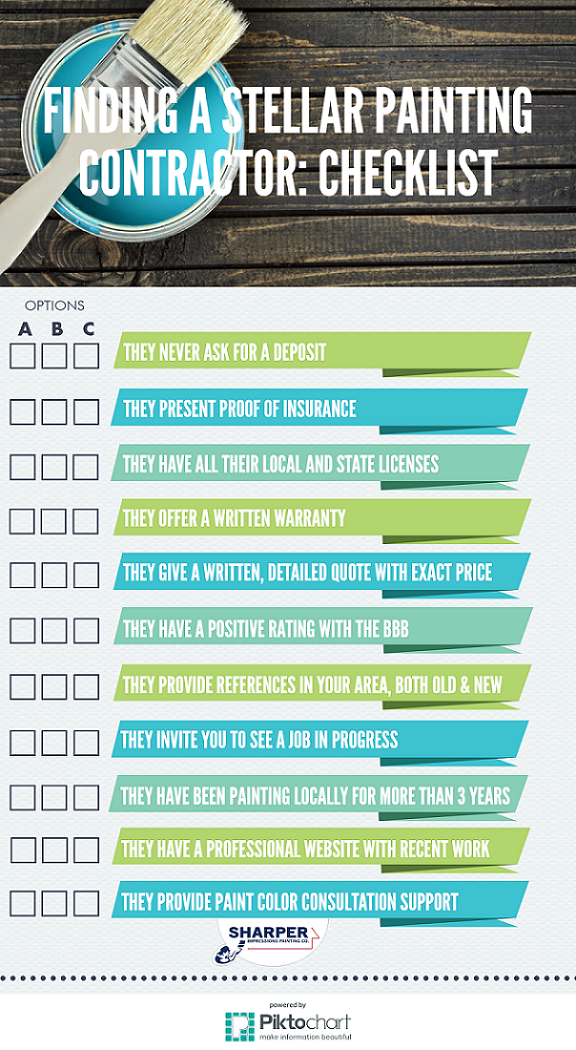Yearning For A Flawless Finish? Discover How Climate Variables Can Guide The Success Of Your Outside Painting Job, Unraveling Crucial Tricks For A Professional Outcome
Yearning For A Flawless Finish? Discover How Climate Variables Can Guide The Success Of Your Outside Painting Job, Unraveling Crucial Tricks For A Professional Outcome
Blog Article
Web Content By-Boyle Hjorth
Comprehending exactly how weather conditions can influence the result of an external paint venture is vital for accomplishing a perfect coating. From temperature changes altering paint attachment to humidity degrees influencing drying out times, each aspect of weather plays a substantial duty in the success of your job. Moreover, wind rate and precipitation can present unexpected difficulties that might jeopardize the top quality of the final result. As we browse through the nuances of climate's impact on outside painting, it ends up being noticeable that meticulous planning and calculated timing are critical for guaranteeing a specialist and resilient end result.
Ideal Temperature Level Variety for Painting
When thinking about exterior painting jobs, the suitable temperature range plays an essential function in achieving optimum results. Painting in the appropriate temperature level conditions ensures that the paint sticks correctly to the surface area, dries equally, and remedies efficiently. Typically, Best Interior Whole House Paint Color advised temperature variety for outside painting is in between 50 to 85 degrees Fahrenheit.
Paint in temperature levels below 50 degrees Fahrenheit can lead to concerns such as inadequate paint bond, extended drying times, and an increased likelihood of splitting or peeling off.
On the other hand, paint in temperatures above 85 degrees Fahrenheit can create the paint to completely dry also promptly, resulting in blistering, bubbling, and an irregular finish.
To accomplish the best outcomes, it is vital to check the weather forecast before starting an external painting task. Preferably, purpose to paint throughout moderate weather conditions with moderate temperatures and low humidity degrees.
Impacts of Humidity on Paint Drying
Humidity levels considerably influence the drying out procedure of paint put on exterior surface areas. High moisture can lengthen the drying time of paint, resulting in potential problems such as dripping, streaking, or even the formation of bubbles on the repainted surface. Excess dampness airborne decreases the dissipation of water from the paint, hindering the treating process. This is particularly troublesome for water-based paints, as they count on evaporation for drying.
On the other hand, reduced humidity levels can additionally influence paint drying out. Incredibly completely dry problems may trigger the paint to completely dry as well swiftly, bring about bad bond and a harsh coating. In such cases, adding a paint conditioner or spraying a fine haze of water in the air can assist regulate humidity degrees and improve the paint result.
To make sure optimal drying conditions, it is advisable to paint when the moisture degrees range in between 40% and 50%.
Tracking humidity levels and taking appropriate actions can aid attain a smooth and resilient paint finish on exterior surface areas.
Wind and Rainfall Factors To Consider
Wind rate and precipitation are vital aspects that dramatically affect the success of an external paint project.
When it concerns wind, both rate and direction are crucial factors to consider. High wind rates can trigger paint to completely dry also promptly, leading to a below average do with prospective issues like breaking or unequal appearance. In addition, wind can lug debris that may stick to the wet paint, bring about blemishes. For that reason, painters should intend to deal with days with light to modest winds for ideal paint conditions.
On the other hand, rainfall, whether rain or snow, can be incredibly detrimental to the result of an outside paint job. Moisture from precipitation can prevent paint bond, causing peeling and bubbling over time. It is vital to prevent painting during wet or snowy weather condition to guarantee the longevity and quality of the paint task. go to this site should additionally enable ample time for the surface area to completely dry thoroughly after any precipitation before commencing or returning to the painting process.
Conclusion
To conclude, weather conditions play a substantial duty in the result of an external painting job. The excellent temperature level range, humidity levels, wind speed, and rainfall all contribute to the success or failing of the paint job.
It is important to take into consideration these elements and strategy as necessary to make certain appropriate paint attachment, drying out times, and overall quality of the finished item.
